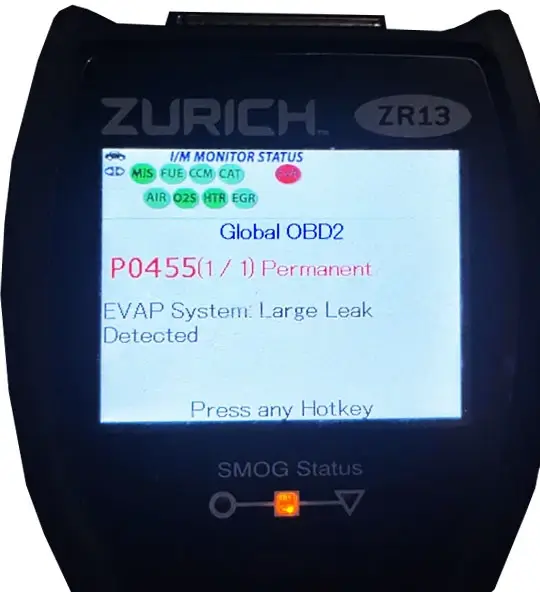OBDII DTC Type — Understanding OBDII Trouble Code Types
OBDII DTC Type — the four ways trouble codes are displayed and what they mean
There are 4 OBDII DTC types; current, history, pending, or permanent. Many DIYers don’t understand how these codes differ and they absolutely don’t understand what a permanent trouble code is or how to get rid of it.
What is a Current OBDII DTC type
A current trouble fault code means the computer has detected a condition that has exceeded a pre-programmed threshold limit and the condition still exists, so it sets a fault code and turns on the check engine light.
The fault code will start with a letter to describe which system within the vehicle is experiencing the fault, along with numbers and letters.
Using a shop manual to find the definition of the fault code, you can also learn the setting criteria used to set the code.
History fault codes
These are trouble codes that were current codes at one time, but the readings that caused the code to be set at one time are no longer out of range. Remember, the computer must see the data out of range for a certain period of time or number of trips. If the data exceeds the exceeds the threshold and sets a code but the data is within acceptable limits for a certain number of subsequent “clean trips,” the computer will move reclassify the code as a history code.
What is a Pending OBDII DTC type
A pending trouble code is a condition where the data has exceeded the threshold a few times, but not enough to meet the criteria to qualify as a current code. Pending codes might be a one or two time glitch caused by an intermittent connection or the beginning of a failing sensor. Pending trouble codes should not be ignored even if you think it’s just a glitch.
Understanding a Permanent OBDII DTC type
This is the code that causes the most trouble for DIYers. They
get the trouble codes read at the auto parts store, replace whatever part is mentioned in the code and then try to clear the code or drive the vehicle to get the check engine light to turn off.
But if you haven’t fixed the root cause and the computer still sees bad data, this code will not self clear, even if you perform a Universal Trip Drive Pattern (see below) or even a Dedicated Monitor Cycle.
Permanent fault codes are always emissions related codes and are designed to prevent fraud during smog checks. In other words, you must actually fix the underlying problem. You can’t trick your way out of a permanent fault code.
• You can’t clear a permanent trouble code with a scan tool
• You can’t clear a permanent trouble code by disconnecting the battery cables.
You have to actually fix the problem and them perform a drive pattern
Perform a Universal Trip Drive Pattern
• Clear all current, history and pending trouble codes
• Start the engine and let it idle for at least 30-seconds.
• Without turning off the engine, drive the vehicle for at least five minutes. drive the vehicle for at least five minutes at more than 25-MPH
• Without turning off the engine, let the vehicle idle for at least 30-seconds.
• Turn off the engine.
The universal trip drive pattern must take at least 10-mins. If the check engine light goes off on the next start, the fix you performed has worked. If the light is still on, you’ll have to perform a dedicated monitor drive cycle
Dedicated monitor drive cycle
The dedicated monitor drive cycle is different for every fault code and also changes by year, make, model and engine. So you’ll have to look up the exact drive cycle in a professional grad shop manual like alldata or eautorepair.
Do not just take the word of some friend or even an auto tech unless they have actually looked up the specific drive cycle for your trouble code.
If you perform the exact dedicated monitor drive cycle and the check engine light is still on, you have not properly fixed the root problem.
©, 2022 Rick Muscoplat

